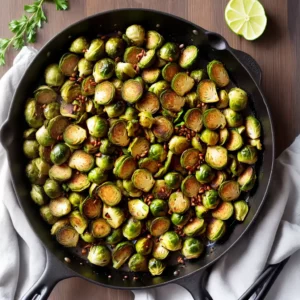As a culinary enthusiast, I always strive to use the freshest ingredients in my kitchen. Tomatoes, with their vibrant colors and incredible versatility, are a staple in many of my dishes. But how long do tomatoes actually last? And what’s the best way to store them to maintain their ripeness and flavor?
In this article, I’ll explore the shelf life of tomatoes and provide you with practical tips on how to store them properly. Whether you prefer to keep your tomatoes refrigerated or on your kitchen countertop, I’ll guide you through the different factors that influence their freshness, spoilage, and overall quality. Together, we’ll ensure that your tomatoes stay delicious and ready to enhance your culinary creations.
Key Takeaways:
- Understanding the shelf life of tomatoes is crucial for maintaining their freshness and quality.
- Proper storage techniques, such as refrigeration or room temperature, can significantly impact the ripening process and flavor of tomatoes.
- Freezing tomatoes is a great way to preserve excess ripe tomatoes for future use in cooked dishes.
- When purchasing tomatoes, look for bright red color, firmness, and a smooth skin.
- Storing cut tomatoes in the refrigerator in an airtight container helps extend their shelf life and ensures food safety.
How to Store Tomatoes Properly
Properly storing tomatoes is crucial to preserve their freshness and flavor. Whether your tomatoes are ripe or not yet fully matured, the right storage method can make a significant difference in their shelf life. Here is a guide on how to store tomatoes to keep them at their best.
If your tomatoes are still green and unripe, it’s best to store them at room temperature on the counter. Placing them in a paper bag can help accelerate the ripening process by trapping the ethylene gas they naturally produce. You can also add a banana or apple to the bag to enhance the process further. Check on them daily for ripeness.
Ripe tomatoes, on the other hand, can be stored in the refrigerator to maintain their freshness. However, it’s important to note that refrigeration can affect their texture and flavor, so it’s best to use them within a few days. To store cut tomatoes, cover the exposed side with plastic wrap and keep them in the refrigerator.
Remember to always store tomatoes whole, as their skin acts as a protective layer. Storing them in an airtight container can also prevent moisture loss and extend their shelf life. By following these simple steps, you can enjoy delicious and vibrant tomatoes in your meals for longer.
Table: Comparing Tomato Storage Methods
| Storage Method | Benefits | Considerations |
|---|---|---|
| Room Temperature (unripe) |
|
|
| Refrigerator (ripe) |
|
|
| Refrigerator (cut tomatoes) |
|
|
The Role of Temperature in Tomato Storage
When it comes to storing tomatoes, temperature plays a crucial role in determining their freshness, flavor, and shelf life. Whether you choose to store your tomatoes in the refrigerator or at room temperature can significantly impact their overall quality.
Tomatoes are known for their vibrant flavor and juicy texture, but refrigeration can affect these qualities. While the cold temperature of the refrigerator can help prolong the shelf life of tomatoes, it can also lead to a loss of flavor. The cooler environment slows down the ripening process, resulting in tomatoes that may lack the same robust taste as those stored at room temperature.
For the best flavor, it is recommended to store ripe tomatoes at room temperature. This allows the natural ripening process to continue, enhancing the sweetness and taste. If you prefer your tomatoes cool, you can place them in the refrigerator for a short period but make sure to allow them to come to room temperature before consuming to fully enjoy their flavor.
Table: Comparison of Tomato Storage Temperature
| Storage Temperature | Effects on Flavor | Shelf Life |
|---|---|---|
| Refrigerator (32-41°F) | Loss of flavor | Prolonged shelf life |
| Room Temperature (55-75°F) | Enhanced flavor | Shorter shelf life |
Table: Comparison of Tomato Storage Temperature.
By understanding the impact of temperature on tomato storage, you can make informed decisions about how to best preserve the flavor and quality of these delicious fruits. Whether you choose the convenience of refrigeration or the enhanced flavor of room temperature storage, proper temperature management will ensure that your tomatoes are always at their best.
Extending the Shelf Life of Tomatoes
When you find yourself with an abundance of ripe tomatoes, there are simple preservation methods that can help extend their shelf life and ensure you can enjoy their deliciousness for longer. Freezing tomatoes is a great option for preserving their flavor and versatility. By following a few easy steps, you can have frozen tomatoes ready to use in your favorite cooked dishes.
To freeze tomatoes, start by rinsing and drying them thoroughly. Next, remove the stems and any blemishes or imperfections. It’s important to handle the tomatoes gently to avoid bruising. Once prepared, place the tomatoes in a freezer-proof container or bag. If using a bag, make sure to remove as much air as possible before sealing it. Label the container or bag with the date to keep track of their freshness. Frozen tomatoes can be stored for up to 12 months in the freezer.
When it’s time to use your frozen tomatoes, there’s no need to thaw them beforehand. Simply take out the desired amount and add them directly to your cooked dishes. They work wonderfully in sauces, soups, stews, and other recipes that call for cooked tomatoes. While the texture of frozen tomatoes may differ slightly from fresh ones, their flavor and versatility remain intact, making them a convenient option for preserving the taste of summer all year round.
Table: Tomato Preservation Methods
| Method | Advantages | Disadvantages |
|---|---|---|
| Freezing | – Preserves flavor and versatility – Convenient for cooked dishes |
– Texture may differ from fresh tomatoes |
| Canning | – Long shelf life – Retains flavor and texture |
– Requires equipment and canning process |
| Drying | – Intense flavor concentration – Long shelf life |
– Requires time and proper drying conditions |
| Tomato paste/sauce | – Concentrated tomato flavor – Versatile for various recipes |
– Requires cooking and processing |
As shown in the table above, freezing is just one of several tomato preservation methods available. Depending on your preferences and culinary needs, you may also consider canning, drying, or making tomato paste or sauce. Each method has its own set of advantages and disadvantages, so choose the one that best suits your needs and resources.
Purchasing and Selecting Tomatoes
When it comes to purchasing tomatoes, there are a few key factors to consider in order to ensure you’re getting the best quality and flavor. Here are some tips for selecting the perfect tomatoes:
- Look for tomatoes that have a bright to dark red color, indicating that they are ripe and ready to eat.
- Choose tomatoes with a natural shine, which can be a sign of freshness and good quality.
- Inspect the skin of the tomatoes and make sure it is firm and smooth, without any wrinkles or blemishes.
- Consider the size and variety of tomatoes you prefer. Different varieties have unique flavors and textures, so choose according to your preferences and intended use.
- Check for any defects or signs of spoilage, such as mold, soft spots, or discoloration.
By following these guidelines, you can ensure that you’re purchasing tomatoes that are at their peak ripeness and will provide the best flavor and quality for your culinary creations.
Different Tomato Varieties
Tomatoes come in a wide variety of shapes, sizes, and flavors. Here are some popular tomato varieties you may come across:
| Tomato Variety | Description |
|---|---|
| Beefsteak | Large and juicy tomatoes, great for slicing and sandwiches. |
| Roma | Oval-shaped tomatoes with a dense texture, perfect for sauces and canning. |
| Cherry | Small and sweet tomatoes, perfect for snacking and salads. |
| Grape | Oblong-shaped tomatoes, similar to cherry tomatoes, but with a slightly different flavor. |
| Heirloom | Older, non-hybrid varieties known for their unique flavors, colors, and shapes. |
“Choosing the right tomato variety can make a big difference in the taste and texture of your dishes. Experiment with different varieties to find your favorites!”
Next time you’re at the grocery store or farmer’s market, keep these tips in mind to ensure you’re selecting the best tomatoes for your meals. With a variety of options available, you can choose the perfect tomatoes to enhance the flavors of your favorite recipes.
Harvest Seasons and Tomato Availability
When it comes to tomato availability, understanding the harvest seasons and local production can help you make informed choices and enjoy the freshest tomatoes. Tomatoes are grown locally year-round in most parts of the United States, either outdoors or in greenhouses. While commercial production is concentrated in states like Florida and California, where tomatoes are available almost year-round, local production can vary depending on your region.
Greenhouse tomatoes have also become increasingly popular, allowing for controlled environments that extend the growing season and ensure consistent availability. These tomatoes are often grown hydroponically, without soil, and can be found in supermarkets and farmers’ markets throughout the year. They are known for their vibrant colors and excellent flavor.
If you’re interested in knowing more about tomato production in your area, you can check with your local Cooperative Extension Office. They can provide specific information on local harvest seasons, the availability of different tomato varieties, and any special events or promotions related to tomatoes in your community.
Tomato Harvest Seasons by Region
| Region | Harvest Season |
|---|---|
| Northeast | July – September |
| Midwest | July – October |
| Southeast | April – November |
| Southwest | May – October |
| West Coast | Year-round |
These harvest seasons are approximate and can vary depending on weather conditions and specific growing practices in each region. It’s always a good idea to check with local farmers, farmers’ markets, or produce departments for the most up-to-date information on tomato availability in your area.
Tips for Receiving and Storing Tomatoes in a Food Service Setting
In a food service setting, proper receiving and storing of tomatoes is crucial to ensure food safety and maintain their quality. To ensure the freshness and shelf life of tomatoes, follow these guidelines:
- Receiving: When receiving tomatoes, inspect them for the specified color, size, and quality. Check for any signs of defects or decay, such as mold or soft spots. Reject any tomatoes that do not meet the acceptable limits for freshness and quality.
- Temperature Guidelines: It’s important to store tomatoes at the appropriate temperature to prevent spoilage and maintain their freshness. Ripe cherry or grape tomatoes should ideally be stored at a temperature between 45 to 60 °F. For longer shelf life, refrigeration temperatures should be below 41 °F. Avoid storing tomatoes at room temperature for an extended period, as it can accelerate the ripening process and lead to spoilage.
- Handling: Handle tomatoes with care to avoid bruising or damage. Avoid stacking heavy objects on top of tomatoes, as it can cause them to become crushed or deformed. Store tomatoes in a well-ventilated area to prevent the buildup of moisture, which can lead to mold growth.
- Refrigeration: To extend the shelf life of tomatoes, store them in a refrigerated environment. However, be cautious not to store tomatoes below 41 °F, as it can cause chilling injury and affect their flavor and texture. It’s recommended to store tomatoes in airtight containers or packaging to prevent cross-contamination and maintain their freshness.
By following these tips for receiving and storing tomatoes in a food service setting, you can ensure food safety and maintain the quality of your tomatoes for longer periods.
| Temperature Guidelines | Storage Method | Shelf Life |
|---|---|---|
| Ripe cherry or grape tomatoes | 45 to 60 °F | Up to 1 week |
| Refrigeration | Below 41 °F | Up to 2 weeks |
Quote:
“Proper temperature control is crucial when storing tomatoes in a food service setting. Maintaining the ideal temperature range ensures the quality and freshness of the tomatoes, preventing spoilage and waste.” – Food Safety Expert
Implementing these guidelines will help you maximize the shelf life of your tomatoes, ensuring that they remain fresh, flavorful, and safe for consumption. Proper receiving, storage, and handling practices are essential to maintain the quality and safety of tomatoes in a food service setting.
Ripening Techniques for Unripe Tomatoes
When it comes to unripe tomatoes, you don’t have to wait for days to enjoy their deliciousness. There are simple ripening techniques you can use to speed up the process and have ripe tomatoes in no time. One popular method is the paper bag method, which harnesses the power of ethylene gas.
To ripen unripe tomatoes using the paper bag method, place them in a paper bag and fold the top to seal it. The ethylene gas naturally produced by the tomatoes will accumulate inside the bag, promoting the ripening process. For an additional boost, add a banana or apple to the bag as they emit more ethene gas, which can further enhance the ripening process.
Check on your tomatoes daily to monitor their ripeness. Keep the paper bag in a dry and warm spot, such as your kitchen counter. The controlled environment will help the tomatoes ripen evenly and develop their full flavor.
Tips for Ripening Unripe Tomatoes:
- Place unripe tomatoes in a paper bag.
- Seal the bag and store it in a dry, warm spot.
- Add a ripe banana or apple to the bag for faster ripening.
- Check on the tomatoes daily to monitor ripeness.
“The paper bag method is an effective way to ripen unripe tomatoes quickly. By trapping the ethylene gas they naturally produce, you can enjoy perfectly ripe tomatoes in a shorter time.”
With these ripening techniques, you can transform unripe tomatoes into juicy and flavorful fruits that are ready to be used in your favorite recipes. Whether you’re craving a fresh tomato salad or looking to make a delicious pasta sauce, these methods give you the flexibility to enjoy tomatoes at their peak ripeness.
Best Practices for Storing Cut Tomatoes
When it comes to storing cut tomatoes, it’s important to follow proper techniques to maintain their freshness and ensure food safety. By refrigerating cut tomatoes in an airtight container, you can extend their shelf life and prevent the growth of harmful bacteria. It’s essential to handle cut tomatoes safely and consume them within the recommended timeframes for optimal quality and taste.
Refrigeration is the key to prolonging the shelf life of cut tomatoes. By storing them in the refrigerator at temperatures below 41 °F, you can slow down the spoilage process and maintain their freshness. It’s crucial to place the cut tomatoes in an airtight container to prevent cross-contamination and keep them from absorbing odors from other foods.
It’s recommended to use cut tomatoes within two days of slicing them for the best quality. Discard any cut tomatoes that have been left at room temperature for more than two hours, as they can become a breeding ground for harmful bacteria. By following these best practices, you can enjoy the full flavor and nutritional benefits of cut tomatoes while minimizing the risk of foodborne illnesses.

Tips for Storing Cut Tomatoes:
- Refrigerate cut tomatoes in an airtight container.
- Consume cut tomatoes within two days of slicing.
- Discard cut tomatoes left at room temperature for more than two hours.
- Handle cut tomatoes safely to prevent cross-contamination.
Food Safety Tips:
Always practice proper food safety measures when handling and storing cut tomatoes to prevent the growth of harmful bacteria and reduce the risk of foodborne illnesses.
Tomatoes in the Refrigerator or on the Counter?
When it comes to storing tomatoes, one of the key decisions is whether to keep them in the refrigerator or on the countertop. Each method has its advantages and disadvantages, so let’s take a closer look at the factors that can affect freshness, flavor, and the ripening process.
Countertop Storage
Storing tomatoes on the countertop at room temperature allows them to ripen naturally and develop maximum flavor. The warmth of the room helps activate enzymes responsible for the ripening process, resulting in juicy and flavorful tomatoes. However, this method is best suited for ripe tomatoes that will be consumed within a few days.
Tomatoes stored on the countertop tend to have a shorter shelf life compared to refrigerated tomatoes. As they continue to ripen, they become softer and more prone to spoilage. Therefore, it’s essential to monitor their ripeness and use them promptly to prevent waste.
Refrigerator Storage
Refrigerating tomatoes can help prolong their shelf life. Cold temperatures slow down the ripening process, which can be beneficial if you have ripe tomatoes that you want to preserve for a couple of days. Refrigeration can help maintain their firmness and prevent them from becoming overly soft or mushy.
However, it’s important to note that the flavor and texture of refrigerated tomatoes can be affected. Low temperatures can dampen their taste and alter their texture, making them less juicy and vibrant. So, while refrigeration can extend the shelf life of tomatoes, it’s not ideal for long-term storage.
The Verdict
Ultimately, the best storage method for tomatoes depends on personal preference and intended use. If you plan to use them within a few days and want to enjoy the full flavor and juiciness, countertop storage is the way to go. On the other hand, if you need to preserve ripe tomatoes or want them to last a bit longer, refrigeration can be a suitable option.
It’s worth noting that tomatoes taste best when served at room temperature, so if you refrigerate them, allow them to come to room temperature before consuming to enhance their flavor. Experiment with both methods to find out which one works best for your needs and enjoy the deliciousness of fresh tomatoes!
| Storage Method | Freshness | Flavor | Ripening Process | Shelf Life |
|---|---|---|---|---|
| Countertop | Shorter shelf life | Maximum flavor | Natural ripening | Best for immediate consumption |
| Refrigerator | Extended shelf life | Slightly dampened flavor | Slower ripening | Suitable for short-term preservation |
The Upside-Down Tomato Storage Technique
When it comes to storing tomatoes, have you ever considered storing them upside down? This unconventional method has gained popularity among tomato enthusiasts for its ability to maintain the tomatoes’ plumpness and juiciness. Unlike traditional storage methods, which can lead to wrinkling and loss of freshness, storing tomatoes upside down can help preserve their delicious flavor.
The idea behind this technique is simple yet effective. By storing tomatoes with their stems facing downwards, you prevent moisture from accumulating at the top, where the stem used to be. This helps to reduce the chance of the tomatoes becoming soft and wrinkled. Additionally, storing tomatoes upside down can help prevent mold growth and prolong the shelf life of the fruit.
“Storing tomatoes upside down allows them to retain their moisture and stay fresh for longer. It’s a game-changer for me!” – Tomato enthusiast
To try this method, simply find a suitable container or basket and place the tomatoes stem-side down. Make sure there is enough space between the tomatoes to allow for proper airflow. You can also add a layer of newspaper or a cloth at the bottom to absorb any excess moisture. Store the container in a cool, dry place away from direct sunlight, and enjoy the benefits of plump and juicy tomatoes for a longer period.
| Benefits of Upside-Down Tomato Storage | Traditional Tomato Storage |
|---|---|
| Preserves plumpness and juiciness | Potential for wrinkling and loss of freshness |
| Reduces moisture accumulation | Risk of softening and mold growth |
| Prolongs shelf life | Shorter storage time |
So, the next time you have a batch of ripe tomatoes, give the upside-down storage technique a try. You’ll be amazed at how it can help maintain the plumpness, juiciness, and overall freshness of your tomatoes. Enjoy the convenience of having flavorful tomatoes on hand whenever you need them, whether it’s for a refreshing salad or a mouthwatering pasta sauce.

The Effect of Sunlight on Tomato Ripening
When it comes to ripening tomatoes, many people believe that placing them in direct sunlight is the best method. However, the truth is that storing tomatoes in a paper bag at room temperature is actually more effective. The paper bag method harnesses the power of ethene gas, which is naturally released by the tomatoes themselves, to accelerate the ripening process. This technique provides better control over the ripening process compared to sunlight exposure.
Placing tomatoes in direct sunlight can indeed affect their ripening process, but it may not always result in the desired outcome. Sunlight can cause uneven ripening, resulting in some areas of the tomato becoming overripe while others remain unripe. This can lead to inconsistent flavor and texture throughout the fruit. On the other hand, the paper bag method allows for a more controlled and uniform ripening process, ensuring that the tomatoes achieve the desired level of sweetness and juiciness.
By storing tomatoes in a paper bag at room temperature, you create a microclimate that optimizes the ripening conditions. The ethene gas trapped in the bag helps to activate enzymes within the tomatoes, promoting the conversion of starches to sugars and softening the fruit. This method is particularly effective for ripening green or unripe tomatoes. It allows you to monitor the ripening progress and ensures that the tomatoes reach their full potential in terms of flavor and ripeness.
So the next time you have a batch of green tomatoes that you want to ripen, consider using the paper bag method instead of relying on sunlight. You’ll have better control over the ripening process and can enjoy delicious, fully ripened tomatoes that are bursting with flavor.
Table: Sunlight vs. Paper Bag Ripening
| Factors | Sunlight Ripening | Paper Bag Ripening |
|---|---|---|
| Ripening control | Unpredictable and uneven ripening | Controlled and uniform ripening |
| Flavor and texture | Inconsistent flavor and texture | Consistent flavor and texture |
| Ripening time | Varies depending on sunlight intensity | Can be monitored and adjusted |
| Effect on unripe tomatoes | May result in incomplete ripening | Facilitates even ripening of unripe tomatoes |
Conclusion
As I conclude this article, let’s recap the key points to remember about tomato shelf life and storage tips.
Firstly, understanding the freshness and ripeness of tomatoes is important for proper storage. Ripe tomatoes can be stored in the refrigerator for a few days, while unripe ones are best left on the countertop at room temperature until they ripen.
Secondly, handling tomatoes safely and using them within the recommended timeframes is crucial. Cut tomatoes should be stored in the refrigerator in an airtight container and used within two days of slicing.
Lastly, incorporating some kitchen hacks can enhance your tomato storing experience. Storing tomatoes upside-down can help maintain their plumpness and juiciness, while the paper bag method traps the ethene gas for accelerated ripening.
By following these storage tips and understanding the factors that affect tomato shelf life, you can enjoy fresh and delicious tomatoes for all your culinary needs. Whether you store them on the countertop or in the refrigerator, remember to handle them with care and make the most of these vibrant and flavorful fruits!
FAQ
How long do tomatoes last?
The shelf life of tomatoes varies depending on their ripeness and storage conditions. Unripe tomatoes can last up to two weeks on the countertop, while ripe tomatoes can be stored in the refrigerator for a couple of days.
How should I store tomatoes?
If your tomatoes are unripe, store them on the counter at room temperature until they ripen. Ripe tomatoes can be stored in the refrigerator to maintain their freshness, but be cautious not to refrigerate unripe tomatoes as it can affect their flavor and texture. Store tomatoes whole, and if cut, cover the cut side with plastic wrap and store in the refrigerator.
What is the ideal temperature for tomato storage?
The temperature at which tomatoes are stored plays a significant role in their quality. Ripe tomatoes can be stored in the refrigerator, but for the best flavor, allow them to come to room temperature before consuming. Unripe tomatoes are best stored at room temperature on the countertop.
How can I extend the shelf life of tomatoes?
If you have excess ripe tomatoes, you can freeze them for future use. Rinse, dry, and remove the stems before storing them in a freezer-proof container or bag. Frozen tomatoes are best used in cooked dishes. It’s important to note that frozen tomatoes may not have the same texture as fresh tomatoes.
What should I look for when buying tomatoes?
Look for tomatoes with bright to dark red color, a natural shine, and a firm, smooth skin. Check for defects and signs of spoilage before purchasing.
When are tomatoes available throughout the year?
Tomatoes are grown locally year-round in most parts of the United States, with peak commercial production in Florida and California. Check with your local Cooperative Extension Office for specific information on tomato production in your area.
How should tomatoes be received and stored in a food service setting?
Tomatoes should be received with the specified color, and any defects or signs of decay should be within acceptable limits. Ripe cherry or grape tomatoes should be stored ideally at 45 to 60 °F, while refrigeration temperatures below 41 °F are recommended for longer shelf life. Cut tomatoes should be stored in the refrigerator in an airtight container to prevent the growth of harmful bacteria.
How can I ripen unripe tomatoes?
Place unripe tomatoes in a paper bag to accelerate the ripening process. The ethylene gas they naturally produce, combined with the enclosed space, helps ripen the fruit faster. Adding a banana or apple to the bag can further enhance the ripening process.
How should I store cut tomatoes?
To maintain their freshness, store cut tomatoes in the refrigerator in an airtight container. It’s best to use cut tomatoes within two days of slicing for the best quality. Remember to handle cut tomatoes safely and discard them after two hours in the temperature danger zone (41 °F to 135 °F).
Should tomatoes be stored in the refrigerator or on the counter?
While tomatoes can be stored in the refrigerator, for optimal freshness and flavor, it’s recommended to store them on the countertop at room temperature. Long-term storage of tomatoes in the fridge can make them mealy and flavorless.
What is the upside-down tomato storage technique?
Storing tomatoes upside-down can help maintain their plumpness and juiciness. The technique involves placing the tomatoes with the stem side down. This method has been found to keep tomatoes more fresh and juicy compared to storing them with the stem up.
Does sunlight affect tomato ripening?
While placing tomatoes in direct sunlight was once a common trick for ripening them, it’s more effective to store them in a paper bag at room temperature. The paper bag method traps the ethene gas released by the tomatoes, which accelerates the ripening process. Sunlight exposure can potentially affect the ripening process, but the paper bag method provides better control.
Source Links
- https://www.realsimple.com/food-recipes/shopping-storing/food/how-to-store-tomatoes
- https://www.cde.state.co.us/nutrition/osnffvpproduceinfosheetscherrytomatoes
- https://www.southernliving.com/food/veggies/tomatoes/how-to-store-tomatoes
Related Recipes:
 How to Store Parsley? (Perfect Every Time!)
How to Store Parsley? (Perfect Every Time!)
 Does Peanut Butter Go Bad? Shelf Life and Storage Tips
Does Peanut Butter Go Bad? Shelf Life and Storage Tips
 Beef Stew Shelf Life: How Long Does It Last in the Fridge?
Beef Stew Shelf Life: How Long Does It Last in the Fridge?
 How to Store Carrots? (Perfect Every Time!)
How to Store Carrots? (Perfect Every Time!)
 How Many Tomatoes in a Pound? (Perfect Measurement Conversion Guide)
How Many Tomatoes in a Pound? (Perfect Measurement Conversion Guide)
 Does Almond Milk Go Bad? How to Tell and Storage Tips.
Does Almond Milk Go Bad? How to Tell and Storage Tips.
 How to Cut a Tomato? (Perfect Step-By-Step Guide)
How to Cut a Tomato? (Perfect Step-By-Step Guide)
 How to Blanch Tomatoes? (Perfect Step-By-Step Guide)
How to Blanch Tomatoes? (Perfect Step-By-Step Guide)







